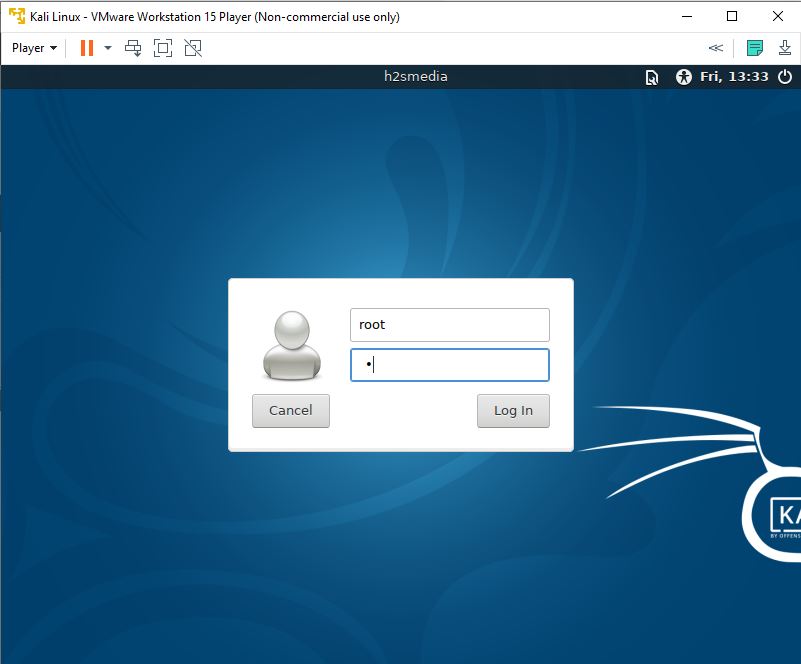

#Kali linux root password how to
How to Change Permissions using Symbolic Mode Absolute mode: this method represents permissions as 3-digit octal numbers ranging from 0-7.You can modify permissions using +, - and =. Permissions are represented as r, w, x for read write and execute, respectively. Symbolic mode: this method uses symbols like u, g, o to represent users, groups, and others.We can change permissions using two modes: This parameter can also be a list if files to change permissions in bulk. filename is the name of the file for which the permissions need to change.permissions can be read, write, execute or a combination of them.Syntax of chmod: chmod permissions filename Now that we know the basics of ownerships and permissions, let's see how we can modify permissions using the chmod command. How to Change Permissions in Linux Using the chmod Command In the output above, d represents a directory and - represents a regular file. Note that we can find permissions of files and folders using long listing ( ls -l) on a Linux terminal. For directories, the user can access them, and access details about files in the directory.īelow is the symbolic representation of permissions to user, group, and others. Execute permissionįor files, execute permissions allows the user to run an executable script. When files have write permissions, the user can modify (edit, delete) the file and save it.įor folders, write permissions enable a user to modify its contents (create, delete, and rename the files inside it), and modify the contents of files that the user has write permissions to. Similarly for directories, read permissions allow the listing of directory content without any modification in the directory. Read permissionįor regular files, read permissions allow users to open and read the file only. Linux File Permissionsįile permissions fall in three categories: read, write, and execute. OtherĪny users that are not part of the user or group classes belong to this class. A user can belong to more than one group as well.

You can use groups to assign permissions in a bulk instead of assigning them individually. Users that belonging to a group will have the same Linux group permissions to access a file/ folder.

Linux GroupĪ user-group is a collection of users. Linux UserĪ user is the default owner and creator of the file. In Linux, there are three types of owners: user, group, and others. Linux is a multi user OS which means that it supports multiple users at a time.Īs many people can access the system simultaneously and some resources are shared, Linux controls access through ownership and permissions.


 0 kommentar(er)
0 kommentar(er)
